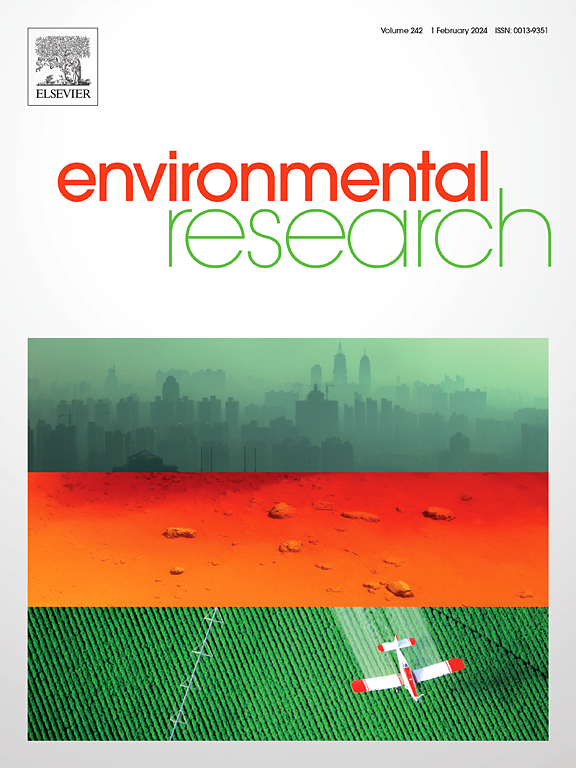Flame-retardant Tris(2-chloroethyl) phosphate: Assessing the effects on microalgae, mussel hemocytes and human peripheral blood cells
IF 7.7
2区 环境科学与生态学
Q1 ENVIRONMENTAL SCIENCES
引用次数: 0
Abstract
Tris (2-chloroethyl) phosphate (TCEP) is a widely used flame retardant in numerous commercial and industrial products. Due to its widespread release and detection in various environmental matrices, TCEP has raised great concerns about its risk to aquatic biota and human health. To this end, the present study investigates the TCEP environmental and human health mediated effects on aquatic biological species/models belonging to different trophic levels, as well as on human peripheral blood lymphocytes. Specifically, TCEP ability to promote (a) growth inhibition in algae, like the freshwater species Chlorococcum sp. and the saltwater species Tisochrysis lutea, (b) cytotoxic and oxidative stress-like events, such as Reactive Oxygen Species (ROS) formation and lipid peroxidation, in challenged mussel hemocytes, as well as (c) cytogenotoxicity in human lymphocytes, was investigated. Based on the results, environmentally relevant concentrations of TCEP could differentially affect the growth of both algal species, with the freshwater one (Chlorococcum sp.) to be more vulnerable compared to saltwater species Tisochrysis lutea. Accordingly, TCEP-treated mussel hemocytes showed increased levels of cell death and a concomitant enhancement of ROS generation and lipid peroxidation at most concentrations tested. Lastly, TCEP at concentrations tested showed significant cytogenotoxic effects on human lymphocytes, as revealed by the low Cytokinesis Block Proliferation Index (CBPI) values and the high micronuclei (MN) frequencies in challenged cells. These findings are of great interest, thus highlighting the risk posed by the TCEP environmental release and the need for further protection of aquatic basins, in favor of aquatic biota and human health.

求助全文
约1分钟内获得全文
求助全文
来源期刊

Environmental Research
环境科学-公共卫生、环境卫生与职业卫生
CiteScore
12.60
自引率
8.40%
发文量
2480
审稿时长
4.7 months
期刊介绍:
The Environmental Research journal presents a broad range of interdisciplinary research, focused on addressing worldwide environmental concerns and featuring innovative findings. Our publication strives to explore relevant anthropogenic issues across various environmental sectors, showcasing practical applications in real-life settings.
 求助内容:
求助内容: 应助结果提醒方式:
应助结果提醒方式:


